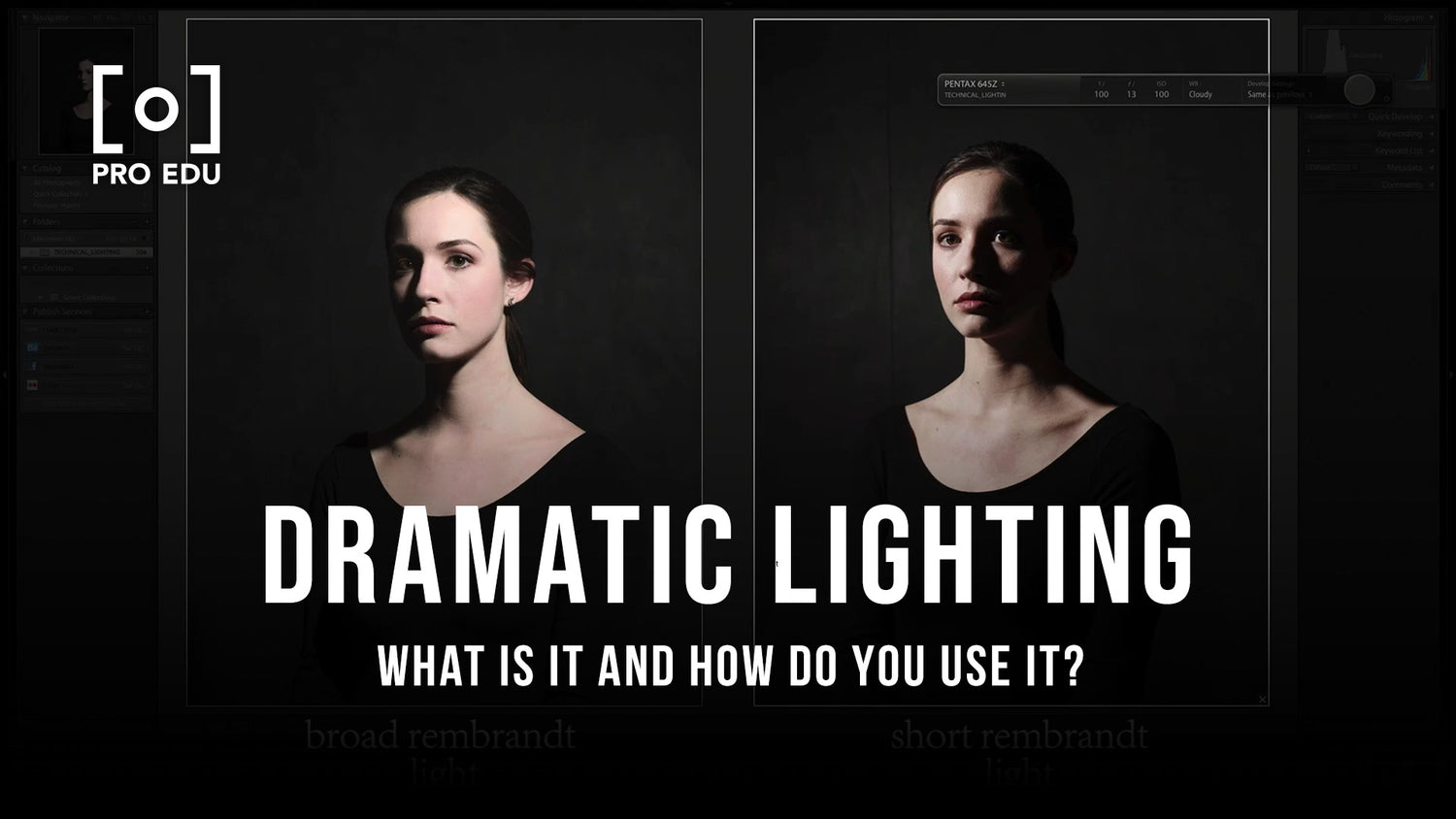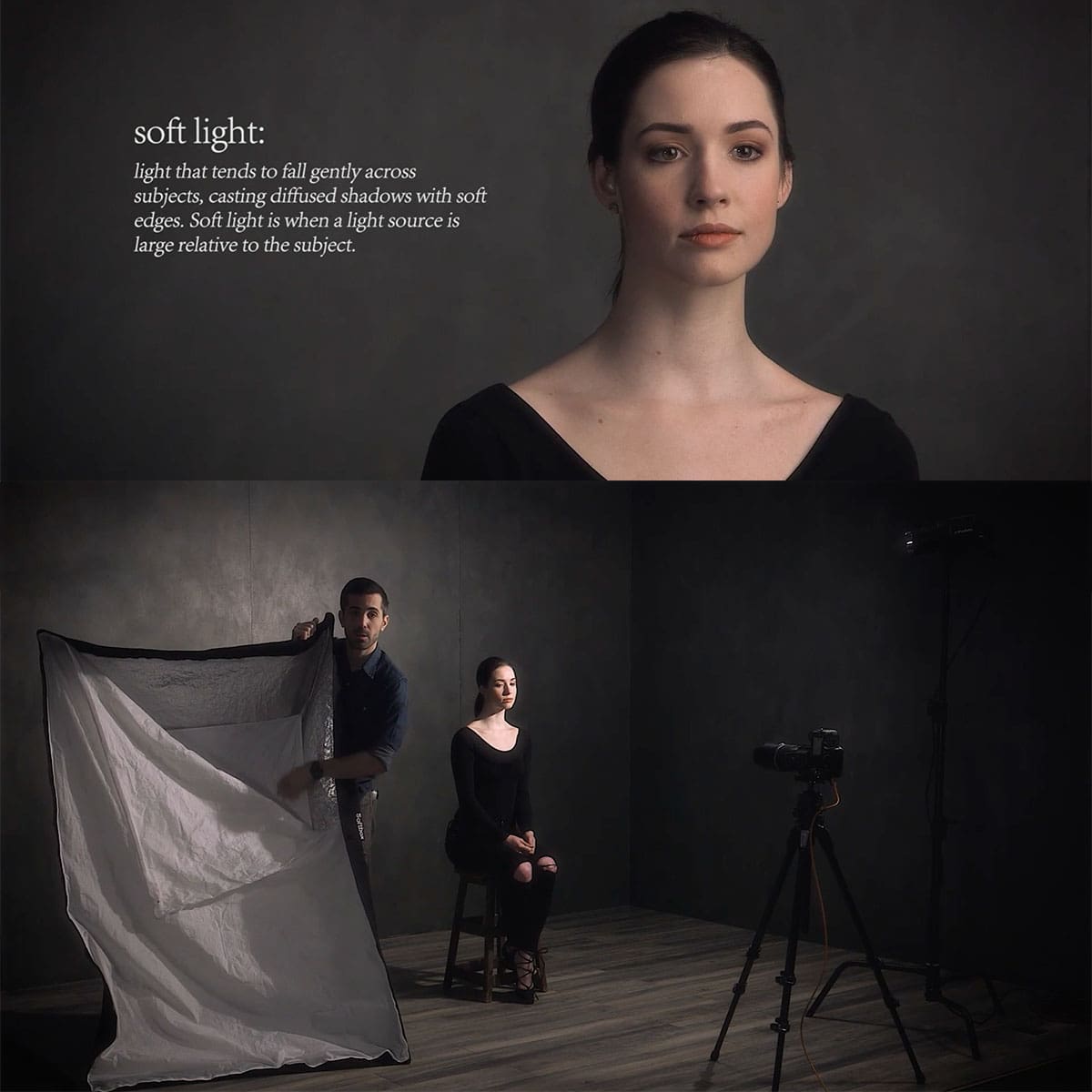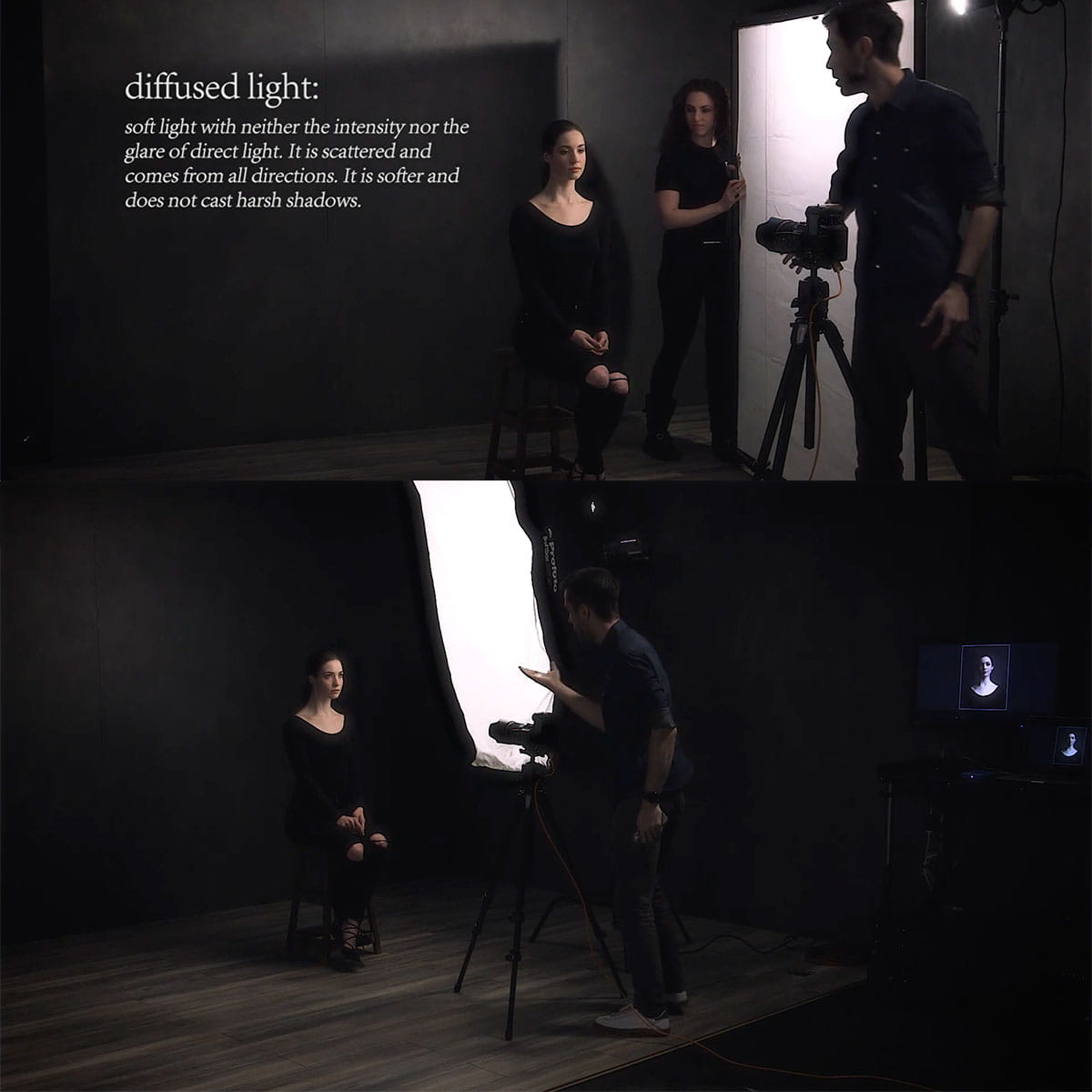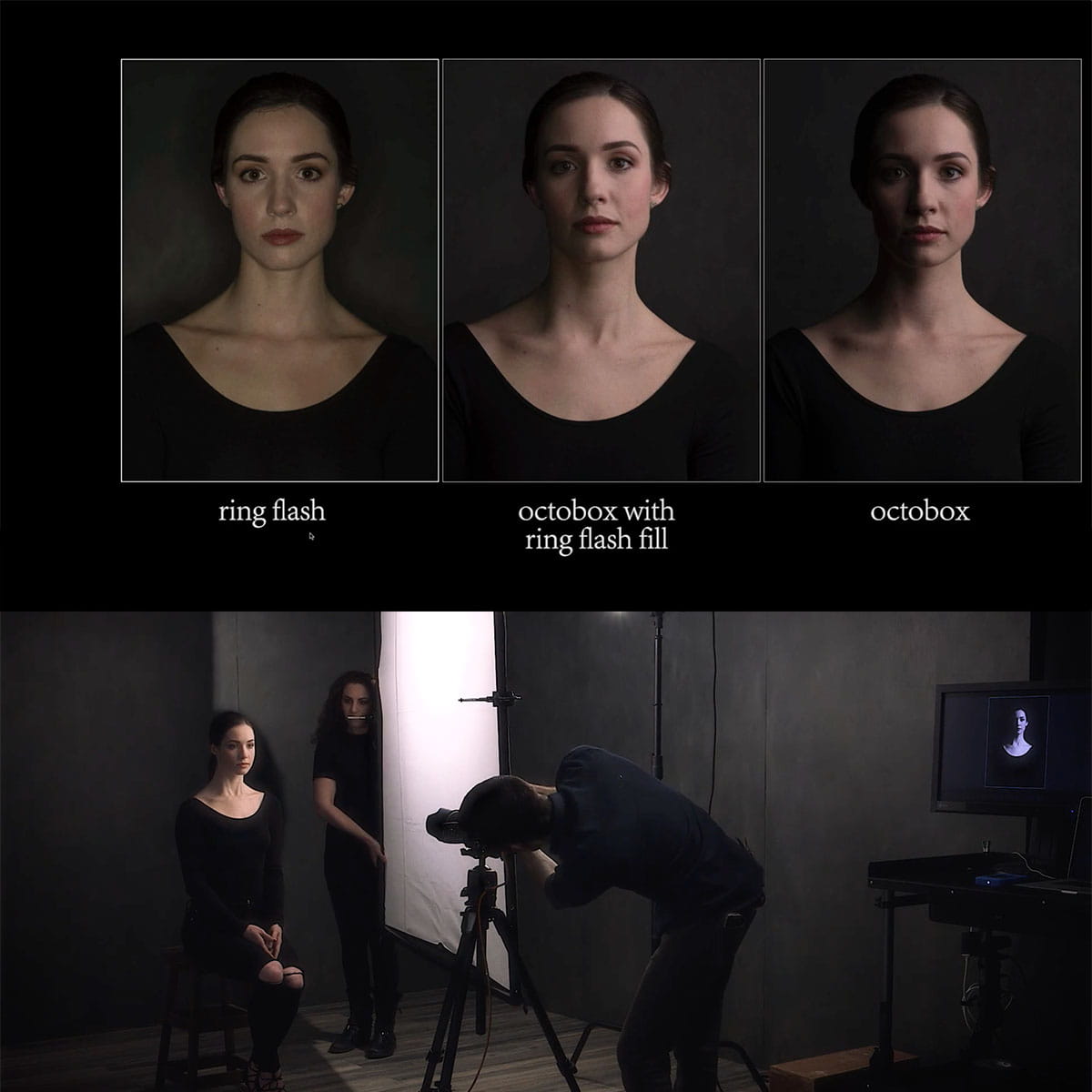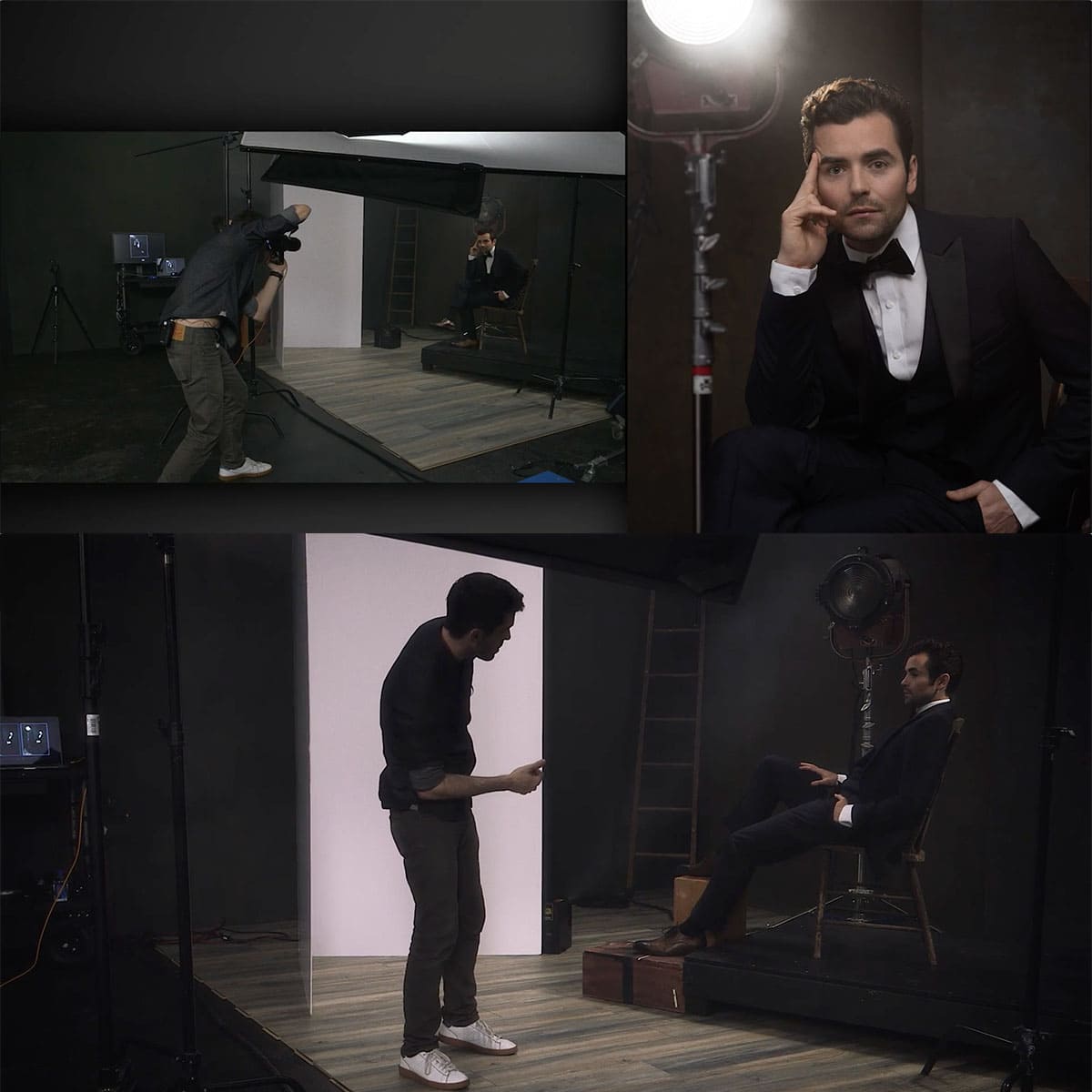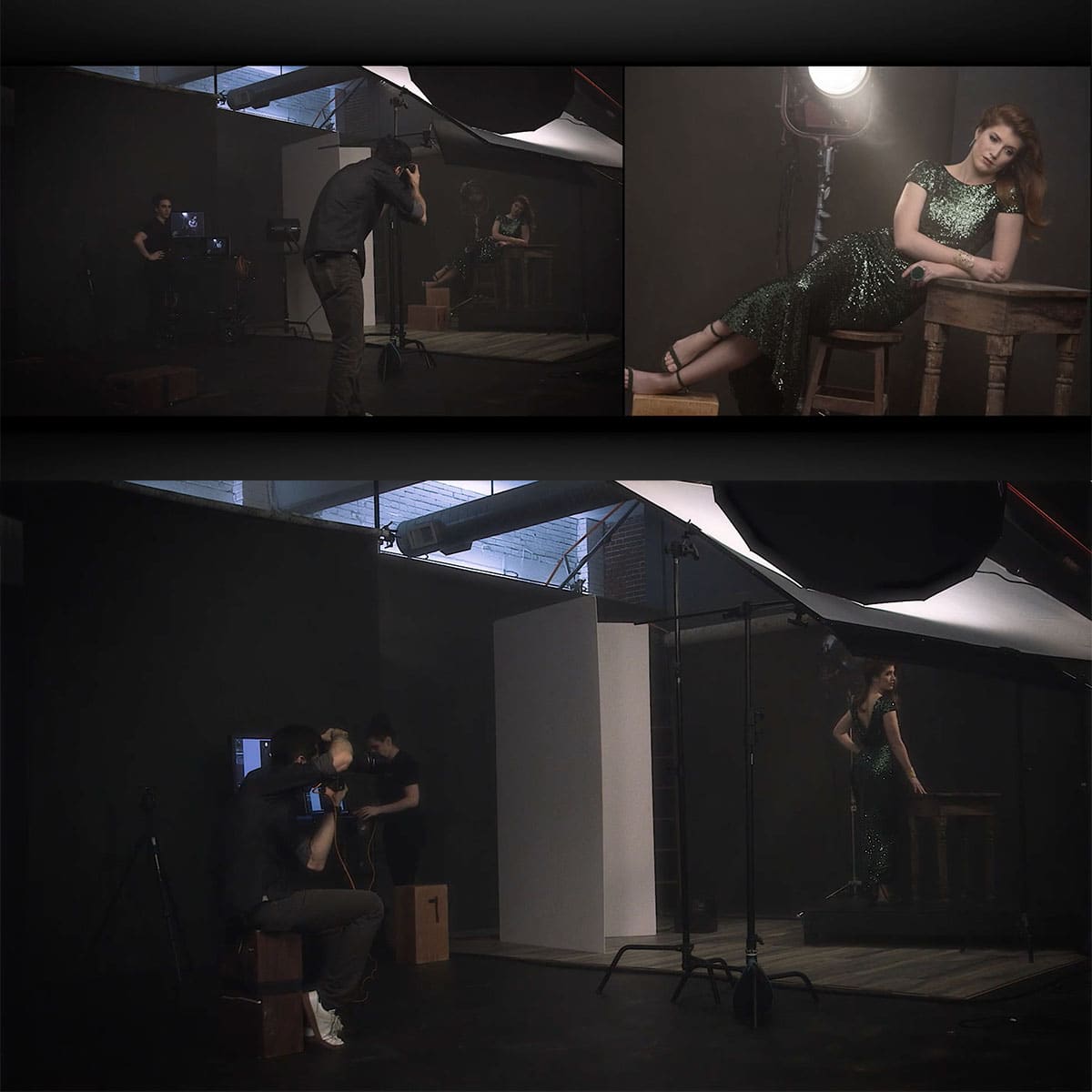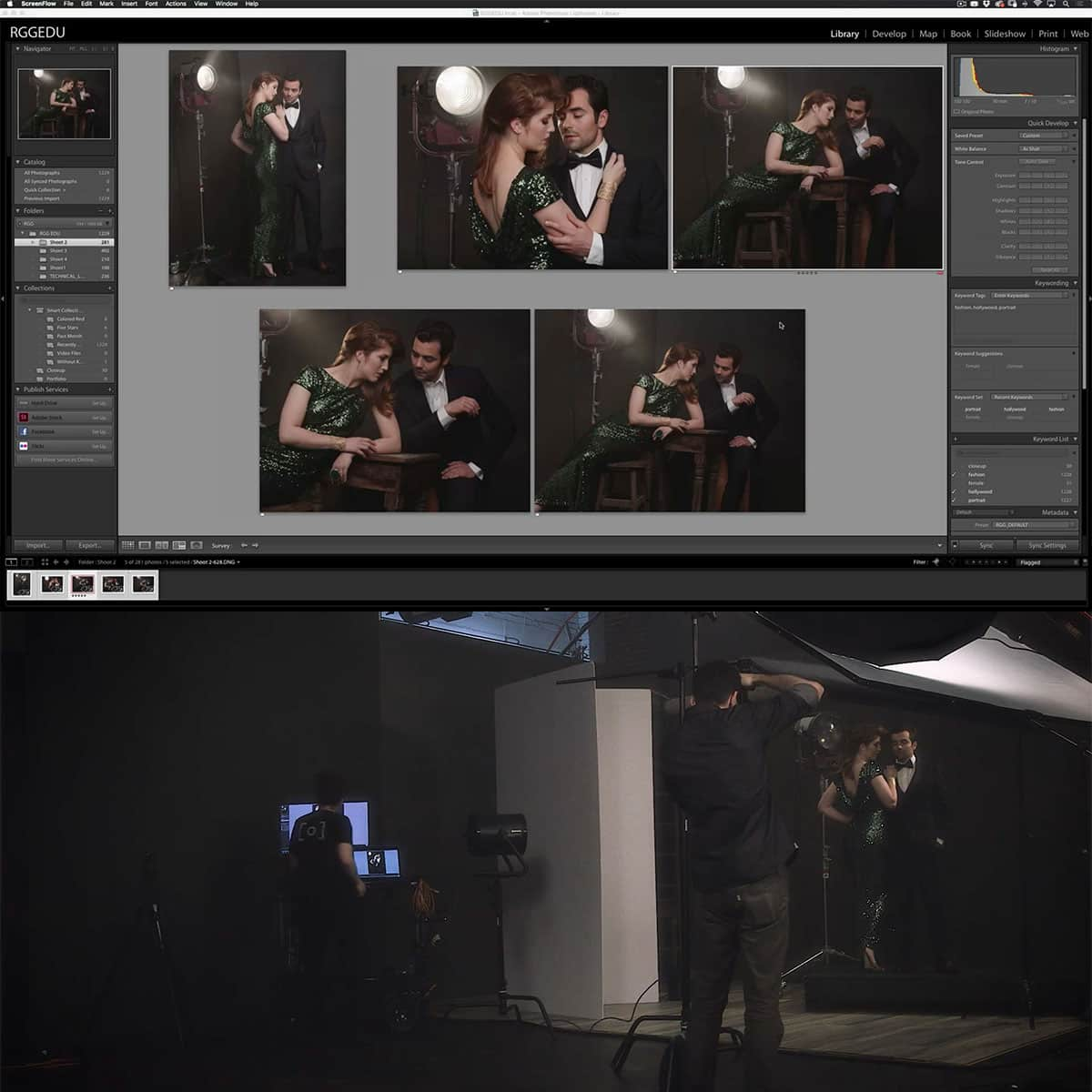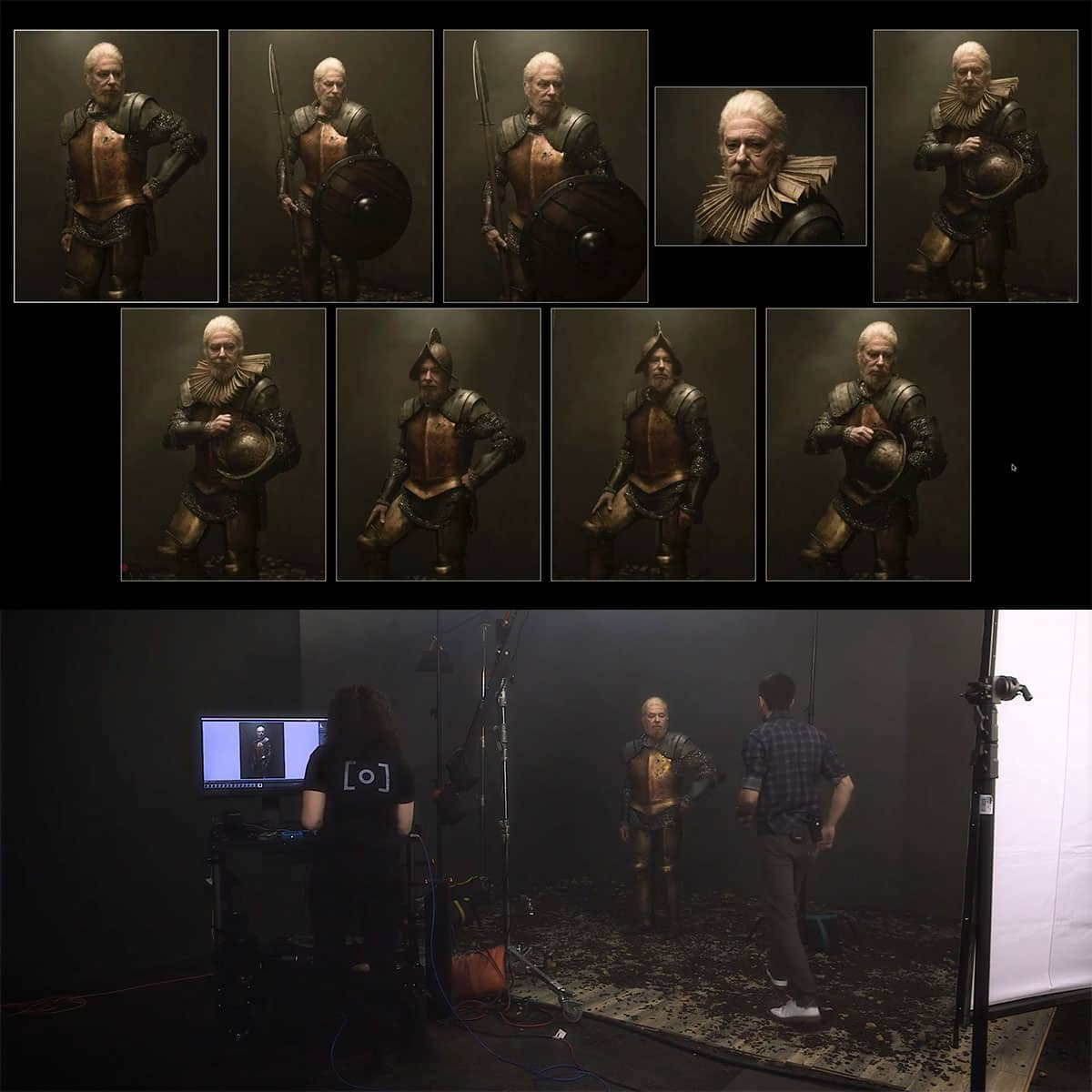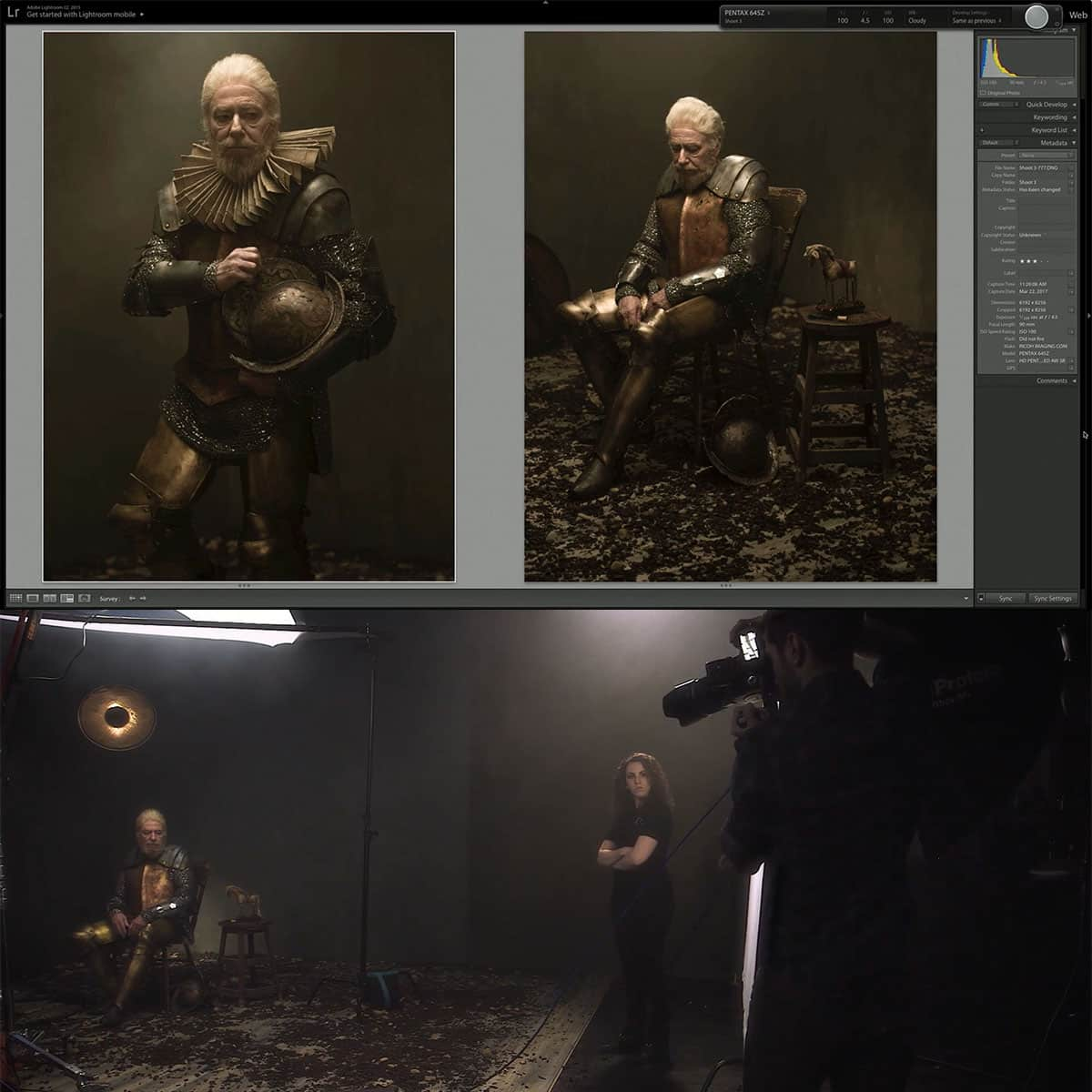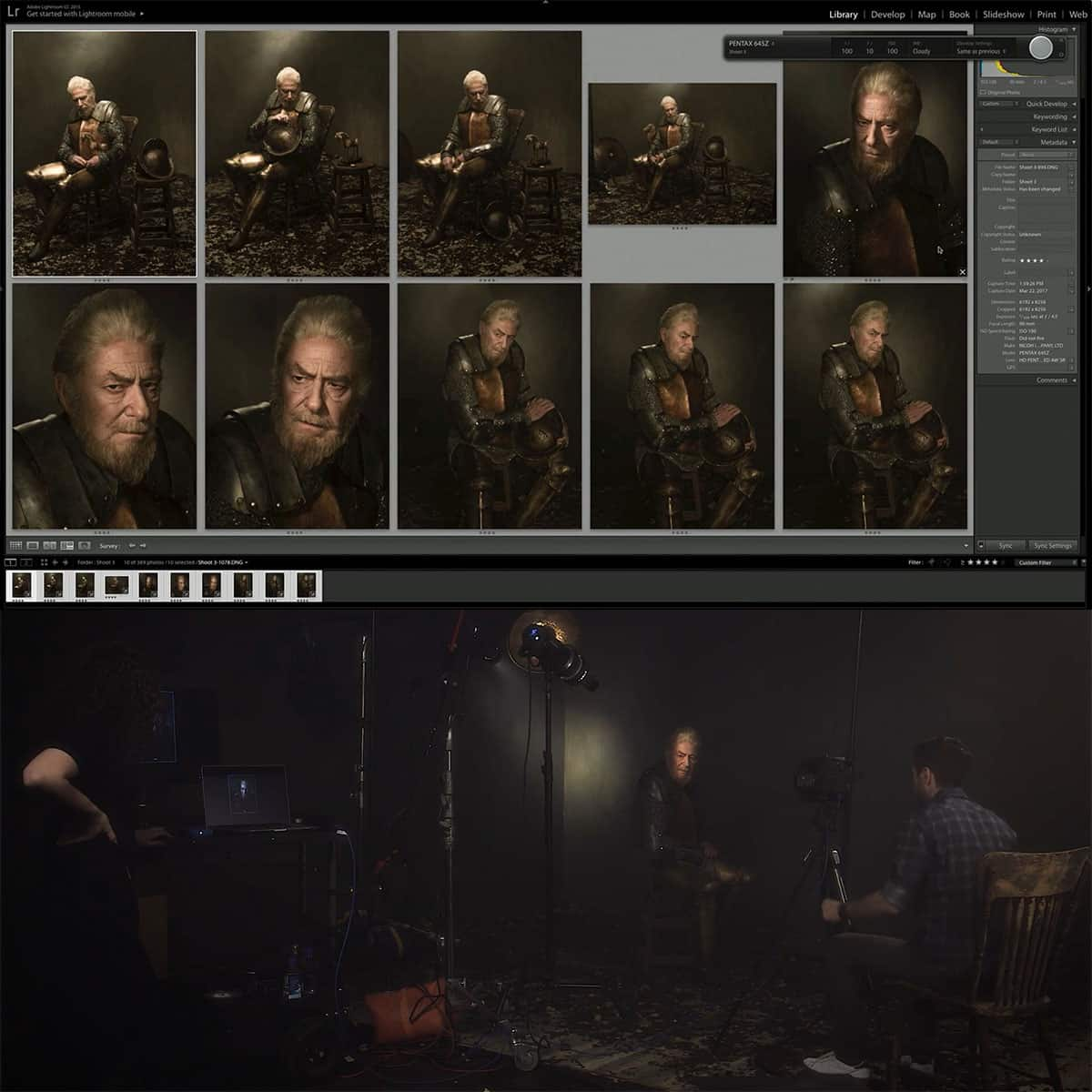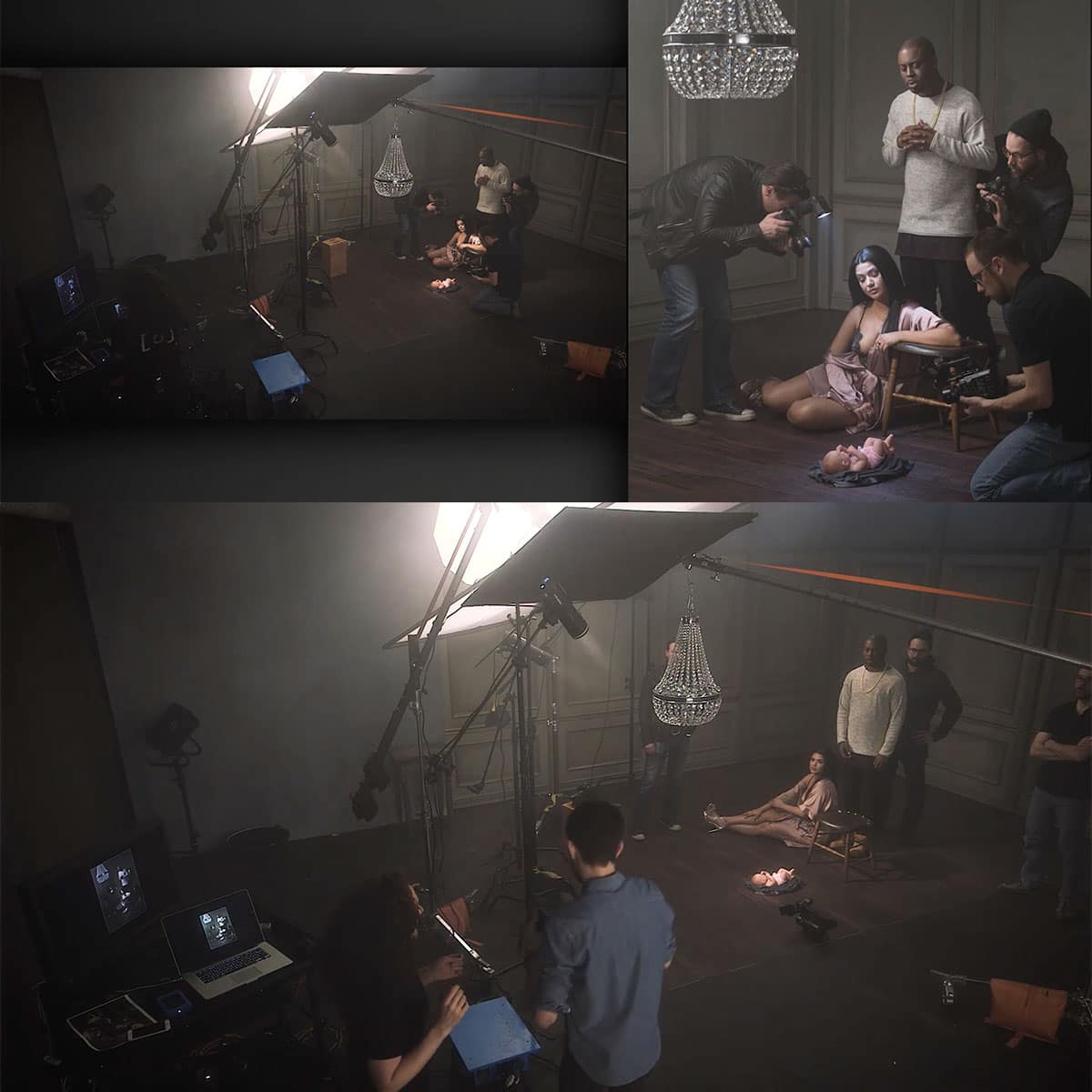Creating dramatic lighting in photography can instantly elevate the mood and emotion of your images. By controlling the quality and direction of light, we can craft stunning portraits that captivate viewers. The key to achieving dramatic lighting lies in understanding how to use light and shadow to create contrast and depth.
In our blog post, we will explore various techniques and tools for setting up dramatic lighting. From adjusting your camera settings to choosing the right light modifiers, we'll provide practical tips that you can apply to your own photography. Whether you're using natural light or artificial sources, dramatic lighting can help you create powerful and memorable images.
We’ll also examine case studies from renowned photographers to see how they achieve dramatic effects in their work. By the end of this article, you'll have a solid grasp on how to use light to create atmosphere and intensity in your photos.
Key Takeaways
- Understand the basics of dramatic lighting to enhance mood and emotion.
- Learn camera settings and techniques for achieving dramatic effects.
- Explore tools and creative practices to master dramatic portrait lighting.
Fundamentals of Dramatic Lighting
Dramatic lighting can transform photos by emphasizing contrast and shadows. It shapes the mood and feel of an image, making the scene more engaging and powerful to the viewer.
Understanding Light and Shadow
Light and shadow are essential elements in creating dramatic lighting. Hard light sources, like direct sunlight or small lamps, cast sharp, defined shadows. These shadows create strong contrast between light and dark areas, adding depth to the photo.
On the other hand, soft light sources, such as diffused or natural light, produce gentler transitions and softer shadows. Both light types are useful, depending on the desired effect. Using various light modifiers like snoots or diffusers helps control light direction and shadow intensity, achieving the desired dramatic effect.
Role of Contrast in Dramatic Effects
Contrast is another crucial factor. High contrast between light and dark areas makes an image stand out. To increase contrast, we can skip using fill lights, which typically reduce shadows. Instead, we might use a black reflector to enhance shadows.
Low contrast produces a more subtle and flat appearance. For dramatic portraits, high contrast is usually more effective. By controlling contrast, we can draw attention to key subjects or features, making them more prominent and impactful.
The Impact of Lighting on Mood and Atmosphere
Lighting dramatically influences a photograph's mood and atmosphere. Bright, direct lighting can create a harsh and intense atmosphere, suitable for edgy or dynamic scenes. Conversely, softer, diffused lighting often results in a calm, serene mood, ideal for tranquil or intimate moments.
We understand that manipulating light and shadows can evoke different emotions. Light direction also plays a role. Lighting from above might appear dramatic and mysterious, while lighting from below can create a more ominous effect. Knowing how to light different scenes, like day exteriors or indoor settings, helps us better craft the desired atmosphere.
By mastering dramatic lighting techniques, we can significantly impact our photographs' overall narrative and emotional depth.
Camera Settings and Techniques for Dramatic Effects
In achieving dramatic effects, key elements like camera settings, angles, and focus techniques play essential roles. Understanding how to balance aperture, ISO, and shutter speed is crucial.
Aperture, ISO, and Shutter Speed
Aperture controls the amount of light entering the camera. For striking portraits, a wide aperture (like f/2.8) can create a shallow depth of field, emphasizing the subject against a blurred background.
ISO affects your camera's sensitivity to light. Lower ISOs (e.g., 100-400) are best for reducing noise in well-lit environments. Higher ISOs can be used in low light but may introduce graininess. Mastering ISO settings ensures clarity in various lighting conditions.
Shutter speed determines how long the camera sensor is exposed to light. Fast speeds (1/1000s) freeze motion, while slower speeds (1/60s or below) can introduce blur, suitable for dynamic effects. Adjusting these three settings—the exposure triangle—enhances the drama in your shots.
Working with Camera Angles and Focus
Changing camera angles can dramatically impact your photos. Low angles can make subjects appear powerful, while high angles can make them seem vulnerable. Experiment with different perspectives to create the desired emotional response.
Focus is another critical element. For dramatic portraits, keep the eyes in sharp focus, ensuring they stand out. Use manual focus if automatic settings struggle in low light or complex scenes. For more creative effects, selective focus on a specific detail can draw attention and create a compelling image.
Using these techniques together can elevate the visual impact of your photography, making each shot more engaging.
The Exposure Triangle in Dramatic Photography
The exposure triangle—aperture, ISO, and shutter speed—must be well-balanced to achieve dramatic effects. Understanding how these aspects interact is key. For example, a wide aperture with a fast shutter speed requires a higher ISO in low light.
When photographing moving subjects, like in commercial beverage photography, a faster shutter speed helps to capture motion crisply. Balancing the triangle ensures that light, sensitivity, and time work together harmoniously for the most dramatic effect.
Mastering these settings and techniques allows us to create powerful, evocative images that captivate viewers.
Lighting Tools and Modifiers
When creating dramatic lighting, the right tools and modifiers play a crucial role. This section covers different types of light sources, how to choose suitable modifiers, and the creative use of lighting equipment.
From Natural to Artificial Lighting Sources
Dramatic lighting can be achieved using both natural light and artificial light. Natural light, like sunlight, can create stunning effects when used wisely. For instance, ambient light during golden hour adds warmth and depth to photos. Artificial lighting options include flash and strobe lights, which provide consistent and controllable light output. Continuous lights, such as LEDs, allow us to see the shadows and highlights in real time, making them easier to work with. Balancing natural and artificial light often yields the most striking images.
Choosing the Right Modifiers for Desired Effects
Modifiers shape and soften the light to achieve different effects. A softbox, for instance, spreads light evenly, creating soft shadows that are perfect for portraits. Umbrellas, both reflective and shoot-through, are versatile and portable, making them a popular choice for photographers. For tighter control, tools like grids and snoots focus the light into a narrow beam, which is essential for dramatic lighting. Barn doors attach to lights to direct the light precisely where we want it, giving us great control over the scene. Reflectors can bounce light to fill in shadows, adding a natural touch to our images.
Creative Use of Lighting Equipment
Creative lighting involves thinking outside the box. We might use multiple lights to highlight different aspects of a subject or backlighting to create silhouettes. Experimenting with colored gels can add a vibrant dimension to our photos, as detailed in The Art Of Shaping Colored Light. Another method is using a snoot to generate a spotlight effect, similar to the look in a James Bond movie title sequence. Grid modifiers help in creating focused light areas, enhancing texture and drama. Combining these techniques with cinematic lighting principles, as seen in the Cinematic Portraiture course, can elevate our photography to the next level.
Portrait Lighting for Dramatic Effects
Creating dramatic effects in portrait lighting involves specific techniques and careful manipulation of light sources. By mastering various setups, controlling light to evoke strong emotions, and using advanced methods, we can elevate our portrait photography.
Mastering Portrait Lighting Setups
Different lighting setups can drastically change the emotion and depth of a portrait. Rembrandt lighting is one technique where a small triangle of light illuminates the cheek opposite the light source. This approach adds a classic touch to the portrait.
Split lighting divides the face into equal halves of light and shadow, lending a moody, intense look. For less dramatic yet effective lighting, loop lighting places a light at an angle, creating a loop-shaped shadow under the nose.
Butterfly lighting, with a light directly above and in front of the subject, produces shadows under the nose and chin, highlighting the model's bone structure. Broad lighting is useful when the subject's face is slightly turned, with the broader side of the face being lit, emphasizing the lit areas over the shadowed ones.
Controlling Light for Strong Emotional Portraits
Controlling light involves not just the type of setup but also the use of modifiers. Using a rim light from behind the subject creates an outline of light, separating them from the background and adding depth.
Using a backlight further enhances the separation effect, creating a halo around the subject’s head and shoulders. By skipping the fill light, shadows are deepened, resulting in a more dramatic contrast.
Using black reflectors or other methods to absorb light on one side can enhance shadows, establishing a strong emotional tone in the portrait. This method works well for indoor settings where light can be controlled, such as in fine art portraiture.
Advanced Techniques for Portrait Photography
For those looking to further enhance their portrait photography, advanced techniques offer a pathway to professional results. Utilizing multiple light sources and modifiers like grids and snoots can focus light with precision, adding texture and dimension to the portrait.
Manual mode on a camera allows detailed control over exposure settings, which is crucial for capturing the full range of dramatic lighting effects.
Mastering post-production techniques such as retouching can add the finishing touch, as seen in advanced portrait retouching. These advanced skills enable us to produce stunning, high-end images that capture the desired mood and emotion.
By learning and applying these methods, we can transform our portrait photography, creating compelling and dramatic images that stand out.
Creative Practices and Case Studies
Exploring the techniques of renowned photographers and analyzing iconic examples can help us understand how to create compelling dramatic lighting in our own work.
Exploring Notable Photographers' Techniques
Annie Leibovitz is a master of dramatic lighting. She often uses a mix of soft and hard light to draw attention to the subject while maintaining shadow details. This creates depth and adds emotional weight to her portraits.
Another example is Yousuf Karsh, who used chiaroscuro to emphasize the subject's features. He positioned his lights to create strong contrasts between light and dark areas in the image.
We can also look at creative lighting techniques by using tools like set.a.light 3D. This lighting simulation software allows us to experiment with various setups before actual shoots, saving time and effort.
Analyzing Iconic Dramatic Lighting Examples
One iconic example of dramatic lighting is Karsh's portrait of Winston Churchill. The use of hard lighting from the side created intense shadows, emphasizing Churchill's stern expression. This technique gives a powerful and authoritative feel to the portrait.
In modern photography, dramatic sunset portraits by contemporary artists can be a great source of inspiration. These case studies often show how to balance artificial and natural light to create dramatic effect.
For example, we can see creative lighting techniques in works by Kate Woodman, where she focuses on storytelling through light and shadows, creating deep and complex images.
By examining these examples, we gain insights into how different light angles, intensities, and sources can drastically alter the mood and impact of a photograph.
Frequently Asked Questions
Dramatic lighting enhances the mood and emotional impact in both photography and cinematography. It plays a crucial role in visual arts, shaping how viewers perceive the scene by manipulating light and shadows.
How does dramatic lighting enhance the mood in photography?
Dramatic lighting can transform a simple photograph into a powerful image by increasing contrast and depth. It highlights the subject while creating intriguing shadows, adding emotional weight and intensity to the scene.
What techniques are used to create dramatic lighting in portrait photography?
To create dramatic lighting in portraits, we often skip the fill light to deepen shadows. Using a negative fill, such as placing a black reflector on the shadow side, can further enhance contrast. Artificial hard light from small sources also effectively produces strong shadows and highlights.
Can you provide examples of dramatic lighting in cinematography?
In cinematography, dramatic lighting is used to evoke specific emotions. For instance, low-key lighting creates suspense in horror films. High-contrast scenes in film noir use shadows to build tension. Dramatic lighting is also common in thrillers to enhance elements of mystery and danger.
What role does lighting play in conveying drama in visual arts?
Lighting in visual arts defines the atmosphere and can convey emotions without words. It directs the viewer's attention to specific elements, emphasizes textures, and creates a sense of time and space, adding depth to the composition.
What setup is required for achieving dramatic lighting effects in a studio environment?
In a studio, achieving dramatic lighting requires careful placement of lights. Using off-camera flash and experimenting with light direction and intensity are key. Diffusers can help control light spread, while reflectors can fine-tune shadows and highlights.
What are the different styles of dramatic lighting and their impact on viewer perception?
Different styles include Rembrandt lighting, characterized by a distinct triangle of light on the cheek, and split lighting, which divides the face into equal light and dark halves. Each style affects how viewers perceive the subject, enhancing drama and emotional impact. Famous photographers like Annie Leibovitz employ these techniques to craft memorable images.


